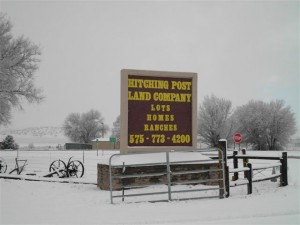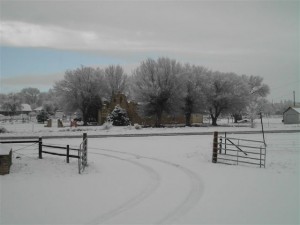Conditions continue to be perfect for schussing down the slopes in New Mexico’s beautiful ski resorts. Check out the Ski Cams to pick your perfect slope!

New Mexico Land for Sale - Southwest Properties, Inc. - David Wolfswinkel Broker, AZ,
Hitching Post Land Company - David Wolfswinkel, Qualifying Broker. Lic#: 14470 - NM
Conditions continue to be perfect for schussing down the slopes in New Mexico’s beautiful ski resorts. Check out the Ski Cams to pick your perfect slope!

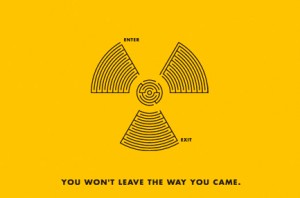
The second annual National Nuclear Science Week, organized by the National Museum of Nuclear Science & History in Albuquerque, New Mexico, will be recognized January 24-28, 2011. Observations across the country include engineering fairs at colleges in Idaho, field trips to the National Museum of Nuclear Science & History in New Mexico, teacher development workshops in Chicago, classroom presentations in Virginia, and much more.
The week is a national, broadly observed recognition of how human knowledge has directed the energy of our most fundamental component, the atom, to the service and progress of our communities and world. It is intended to advance public and industry awareness of the key benefits, and to recognize industry professionals.
“With the nation’s spotlight on energy generation and a greener environment, it makes sense to recognize the contributions of nuclear power. Other technologies, such as nuclear medicine with its diagnostic and treatment opportunities, are also hugely important to all Americans,” said Jim Walther, Director of the National Museum of Nuclear Science & History. “The future career needs in science and energy are significant as well. This week provides all of us with more information on these vital topics.”
The goal of National Nuclear Science Week, which is themed “Get to Know Nuclear,” is to encourage education, participation and communication around daily themes: nuclear sciences, careers in the nuclear field, energy generation, nuclear safety, and nuclear medicine and radiology.
The National Nuclear Science Week (www.NuclearScienceWeek.org) is a partnership between the National Museum of Nuclear Science & History and nuclear industry partners including the Nuclear Energy Institute, Entergy, the U.S. Department of Energy, the American Nuclear Society, and the Society of Nuclear Medicine.
To learn about nuclear science year-round, plan a visit to the National Museum of Nuclear Science and History (www.nuclearmuseum.org) in Albuquerque (www.ItsATrip.org).
HUD AWARDS $1.4 BILLION TO NEARLY 7,000 LOCAL HOMELESS PROGRAMS –
PART OF ADMINISTRATION PLAN TO PREVENT & END HOMELESSNESS
Funding comes one week before national one-night count of homeless persons and families
WASHINGTON – U.S. Housing and Urban Development (HUD) Secretary Shaun Donovan today awarded $1.41 billion in funding to keep nearly 7,000 local homeless assistance programs operating in the coming year (see attached chart). The grants announced today form a critical foundation for the Obama Administration’s Opening Doors strategy, the nation’s first comprehensive plan to prevent and end homelessness. For a local summary of the grants announced today, visit HUD’s website.
Today’s announcement also comes just a week before thousands of volunteers in nearly every city and county conduct a national one-night count of homeless persons and families. HUD’s Let’s Make Everybody Count! campaign is intended to document trends in homelessness that are crucial to local planners’ efforts to prevent and end homelessness in their areas.
“There is a tremendous need on our streets and in our shelters among those experiencing both long-term homelessness as well as families confronting a sudden economic crisis,” said Donovan. “These grants are the life blood for thousands of local housing and service programs that are doing the heavy lifting to meet President Obama’s goal of ending homelessness.”
Barbara Poppe, Executive Director of the U.S. Interagency Council on Homelessness Executive Director, added, “Across federal agencies, we are aligning mainstream programs towards a goal to prevent and end homelessness. While we continue to strengthen public-private partnerships in Washington and across the country to meet this goal, today’s grants provide essential support to continue the progress and meet critical needs of those who experience the crisis of homelessness.”
In June, 19 federal agencies and offices that form the U.S. Interagency Council on Homelessness (USICH) submitted to the President and Congress the nation’s first comprehensive strategy to prevent and end homelessness. The full report is titled Opening Doors: Federal Strategic Plan to Prevent and End Homelessness. The plan puts the country on a path to end veterans and chronic homelessness by 2015; and to ending homelessness among children, family, and youth by 2020.
Last September, HUD announced that it would renew funding through HUD’s Continuum of Care programs to existing local programs as quickly as possible to prevent any interruption in federal assistance. HUD will award funds to new projects later in the year.
HUD’s Continuum of Care grants provide permanent and transitional housing to homeless persons as well as services including job training, health care, mental health counseling, substance abuse treatment and child care. Continuum of Care grants are awarded competitively to local programs to meet the needs of their homeless clients. These grants fund a wide variety of programs from street outreach and assessment programs to transitional and permanent housing for homeless persons and families.
HUD’s homeless assistance grants are reducing long-term or chronic homelessness in America. Based on the Department’s latest homeless assessment, chronic homelessness has declined since 2005 due to significant investments to produce thousands of units of permanent supportive housing for those who had been living on the streets. While the total number of homeless persons in America dropped slightly between 2008 and 2009, the number of homeless families increased for the second consecutive year, almost certainly due to the ongoing effects of the recession. In the last 10 days of January, volunteers from across the country will attempt to count the number of homeless persons living in shelters and on the streets as part of a national point-in-time count. For more information about HUD’s “Let’s Make Everybody Count!” campaign, visit www.hud.gov/homelesscount.
Based on HUD’s 2009 Annual Homeless Assessment Report (AHAR), volunteers throughout the nation counted 643,000 homeless people during a given night in January 2009. In addition, HUD found that during 2009, 1.54 million people used emergency or transitional housing programs in 2009. A typical sheltered homeless person is a single, middle-aged man and a member of a minority group. Of all those who sought emergency shelter or transitional housing during 2009, the following characteristics were observed:
In addition to HUD’s annual grant awards, HUD allocated $1.5 billion through its new Homeless Prevention and Rapid Re-housing (HPRP) Program. Made possible through the American Recovery and Reinvestment Act of 2009, HPRP is intended to prevent persons from falling into homelessness or to rapidly re-house them if they do. To date, more than 750,000 persons have been assisted through HPRP.
At 1:35pm on January 6, 1912 President William Howard Taft signed the proclamation admitting New Mexico (as the 47th state) to the Union. This ended one of the longest quests for statehood of any state – over 60 years after becoming a territory in 1850. There are plenty of celebrations going on leading up to the 100th anniversary of this state of Enchantment, click here for more details…
With a population density of 16 per square mile, New Mexico is the sixth-most sparsely inhabited U.S. state—that means you don’t have to hear your neighbors sneeze! Look into living the New Mexico lifestyle for yourself at Spring Canyon Ranch, Ponderosa Views or Vera Cruz Mountain Ranch.
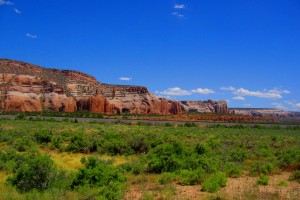
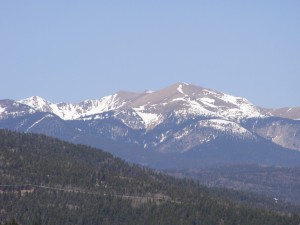
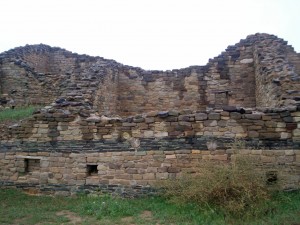
According to the pundits at CNNMoney are signs its heartbeat is getting stronger…
Here’s a round-up of some of the “real estate oracles” we’ve found around the Internet. The mood is cautiously optimistic, which is just how we like it. Here at Southwest Properties and Hitching Post Land Co., we believe in solid investments—like land, for example. No wild cards, no roller coaster rides, no jumping through hoops for financing. We’re just sayin’…
U.S. Housing Market Predictions for 2011 and Beyond from The Home Buying Institute
AOL Real Estate: Housing Market 2011 Forecast
REAL Trends’ 2011 Market Predictions
NEW MEXICO WINTER WONDERLAND!
Snowshoes, snow mobiles, snow men, snow fights… 🙂
